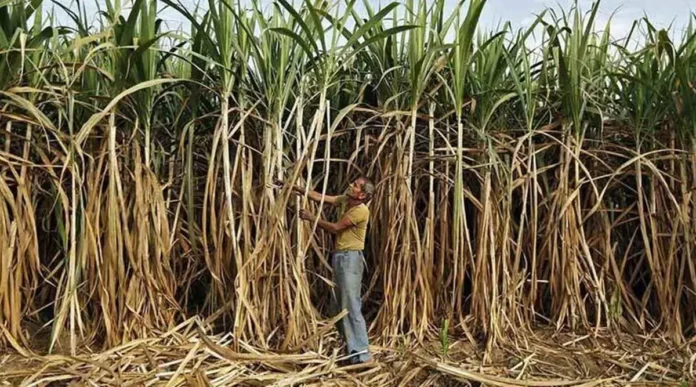For years, Kirpal Singh Musapur (60) grew sugarcane on 60 per cent of his 60-acre farmland in Jalandhar’s Musapur village. That figure is now down to 16 per cent.
“I used to grow sugarcane on 38 acres till 2009-2010, which has come down to 10 acres now. Now my area under paddy has increased from 10 acres to 38 acres in all these years,” he said.
Musapur, who completed his Civil Engineering, started farming in 1995-96 and started growing sugarcane in 1998.
“I have increased the area under sugarcane every year from 1998 to 2010-11, but then problems started erupting for cane growers. Post 2014, it has just been total chaos. High input cost and poor price, which are also being paid to farmers after a delay of around one year, have made cane farming a bitter harvest for me,” he added.
Musapur still awaits his Rs 12.65 lakh payment that is pending with Phagwara sugar mill for the year 2019-20 and 2020-2021. This is the story of every cane grower of the state.
“I am educated and also a big farmer, if I am not able to sustain area under cane how can small, medium and marginal farmers sustain sugarcane farming in the state?,” he asked, adding that since 2014 the price of the cane has gone up by 1 per cent but input cost has doubled.
“I have calculated the cost for growing cane on one acre excluding family labour hours and it comes to Rs 92,570 per acre including Rs 4,000 for preparing the field to plant cane crop, Rs 10,850 seeds (35 quital per acre), Rs 13,000 for sowing and fertilisers, Rs 4,000 for labour, which is required four times for this around one year old crop, then there are harvesting, transportation charges etc,” he said, adding that from one acre a farmer gets around 300 to 325 quintals sugarcane and if it is sold at current State Agreed Price (SAP) , then it comes to around Rs. 97,000 to 1.05 lakh.
By this calculation a farmer would earn only Rs 4,500 to Rs 9,500 per acre after one year which is too meagre.
Sugarcane crop is planted in September and its harvesting takes place next year in November . Similarly, Ratoon crop of sugarcane, which is harvested in February and March, gets ready for the next harvest only by next year after January 15.
“If I had proper water arrangement, I would have grown paddy on my current 10 acres under sugarcane,” said farmer Kirpal Singh, adding that paddy is just four months crop and one gets assured price but cane is one-year crop and farmers are getting just few thousands more than the input cost.
The paddy yield in Punjab is 25-32 quintals per acre and the MSP was Rs 1,888 for 2020-21 kharif season – and a farmer on an average can sell paddy worth Rs 56,000 per acre and can earn Rs 40,000 by meeting input cost of Rs 15,000 to 16,000 per acre in four months.
“When we take our crop to mill, we are supposed to be paid by the mills in 14 days times as per the law, but our full payments are made after a year or even after two years,” said Kirpal Singh.
He rued that a slip system, which is entry pass for farmers to take cane to inside the mill, has created chaos and farmers need to spend 2-3 nights in the winters on roads outside the mills for their turn to enter the mill.
Punjab needs to divert area from paddy to cane, and the state government in 2012-13 had planned to bring around 2.25 lakh hectares under sugarcane but currently Punjab has recorded just 95,000 hectares under it.
In the year 1995-96, cane witnessed the highest area in the state by recording 1.73 lakh hectares under it which has now fallen by 45 per cent.
Those who have political and bureaucratic connections, get early access to the mills, while common farmers are forced to stay on roads for days as the government does nothing to set this system right, said farmer, adding that the cane which reached mills after March 15 also causes loss to the farmers because the weight of the cane goes down by 10 to 15 per cent by this time due to comparatively warm days. Also due to mills’ mismanagement, farmers are supposed to transport their cane to faraway mills. This increases the transportation cost and put farmers and public at risk while commuting on the highways with overloaded trolleys.
[ad_2]





